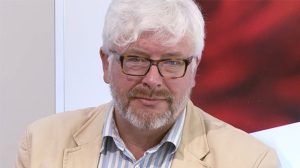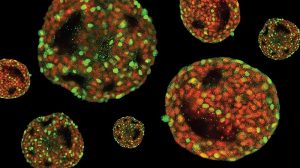Pluripotent stem cell banking: why and how

Human pluripotent stem cells (hPSCs) have the ability to self-renew indefinitely and differentiate into all cell types. This makes them an invaluable source of material for multiple applications, such as disease modeling, toxicology screening, and cell replacement therapies. These properties, along with more accessible and efficient reprogramming and genome editing techniques, have contributed to the rapid increase in the number of hPSC lines being created and used worldwide.
By 2018, it was estimated that over 10,000 hPSC lines had been reported in the literature [1] based on an analysis of more than 3,500 hPSC research papers. This figure, combined with the finding that approximately one third of the lines submitted for distribution were found to fail minimal quality criteria [2], raises concerns about the lack of consensus on hPSC quality attributes and reproducibility between research groups.
Newly generated or established hPSC lines must be characterized to ensure consistency and reproducibility in stem cell research across labs. Although characterization takes time and can be expensive, it is possible to spread the cost over many years and projects by creating a well-characterized cell bank. Periodically thawing and assessing new vials from the bank can boost confidence that the cells have not drifted too far from the characterized bank. As well as helping to achieve cell line standardization, a fully characterized hPSC bank ensures your supply of consistent, high-quality hPSCs as a starting point for further research.
Continue reading below for resources, including related webinars and courses, to learn how to build a characterized cell bank to ensure your supply of consistent, high-quality cells.
On-Demand Webinars
Improving reproducibility of your hPSC research by generating a high-quality cell bank
Many hPSC lines are available, but not all of them pass quality tests. Characterizing your cells ensures that you know what you’re working with and facilitates reproducibility in your research. In this seminar, Matthew Hildebrandt from STEMCELL Technologies reviews why it’s important to characterize cell lines. He also discusses how to build a well-characterized working cell bank to ensure consistent cells throughout a project and how it can help you save time and money in the long term.
Nature research round table: standards for pluripotent stem cell banking
Glyn Stacey, Director of the International Stem Cell Banking Initiative (ISCBI), discusses standards for PSC banking with a focus on scientific challenges for PSCs, standardization of ethics, the role of stem cell biobanks, and best practices for cell therapy. This presentation and the following Q&A session were moderated by Joanne Mountford, formerly from the University of Glasgow.
Nature research round table: defining and maintaining pluripotency & hPSC line registration and banking – panel discussion
In this panel discussion led by Ludovic Vallier, formerly from the Wellcome Trust Sanger Institute, and Joanne Mountford, formerly from the University of Glasgow, keynote speakers from the “Challenges in Ensuring hPSC Quality” Nature Research Round Table respond to questions from the forum and evaluate findings on topics raised in the previous talks.
On-Demand Courses
Expansion of hPSCs in 3D suspension culture
Depending on your research goals, you may need to generate large numbers of hPSCs for your cell banks. In this free, on-demand course, STEMCELL Technologies’ in-house PSC experts demonstrate how to safely and rapidly expand and scale up hPSCs in 3D suspension culture.
Pluripotent stem cell maintenance
Learn how to maintain hPSCs and assess their quality and characteristics in this free, on-demand course.
References:
- Guhr A et al. (2018) Recent Trends in Research with Human Pluripotent Stem Cells: Impact of Research and Use of Cell Lines in Experimental Research and Clinical Trials. Stem cell reports 11(2): 485–96
- Felkner D et al. (2019, June) “Human pluripotent stem cell quality: A scientific wake‐up call.” Poster presented at the ISSCR Annual Meeting, Los Angeles, California
In association with




